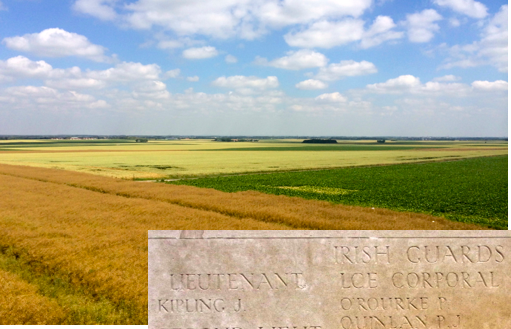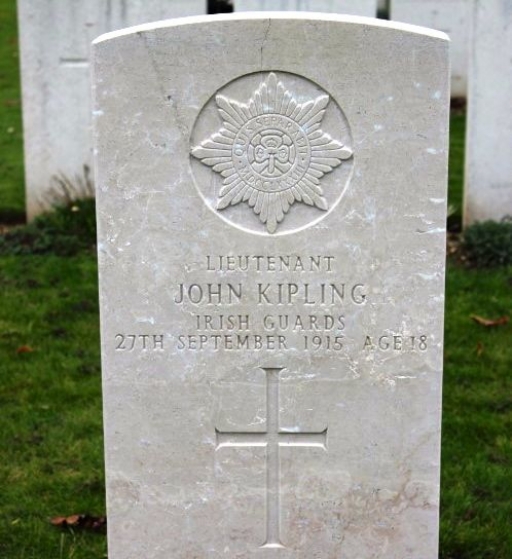A century of mystery about what happened to John Kipling, known as Jack, as he led his troops into action during the Battle of Loos in September 1915 may have been solved, according to new research published by the Western Front Association.
Authors Graham Parker and Joanna Legg suggest that the only son of the poet and author, Rudyard Kipling, is correctly buried in a grave marked with his name in St Mary’s Advanced Dressing Station Commonwealth Cemetery near Loos.
After John was reported missing at Loos, Rudyard Kipling sought to establish his son’s fate, and possibly, his final resting place by interviewing witnesses in Jack’s battalion, 2/Irish Guards, but he was unable to determine what happened to him.
Kipling was deeply affected by his son’s disappearance and wrote the famous poem My Boy Jack. At the Armistice, John Kipling still remained officially ‘missing’.
It was Rudyard Kipling who suggested the inscription ‘Known unto God’ for the gravestones of unidentified British and Commonweath soldiers of the Great War. The author also inspired use of the Biblical epitaph, ‘Their Name Liveth for Evermore’.

The former battlefields of Loos today; Jack Kipling’s name (inset) was originally included on the Loos Memorial to the Missing at Dud Corner (Photo Centenary News)
In September 1919, the body of an unidentified Irish Guards lieutenant was recovered from the Loos battlefield and buried in an unnamed grave at St Mary’s A.D.S. Cemetery.
More than 70 years later, the Commonwealth War Graves Commission determined in 1992 that this was the last resting place of John Kipling and erected a headstone.
Whether the body buried in the grave is that of Kipling has been the subject of intense debate, the Western Front Association (WFA) says.
But after detailed research, Graham Parker and his daughter, Joanna Legg, conclude ‘on the balance of probabilities’ that his identification is correct.
The WFA explains: “It has been argued that the body of the unidentified officer was recovered three miles from where John fought – and that John was a second lieutenant on the day of his death and, though promoted to Lieutenant, he went into action as such as his promotion had not been officially announced.
“The article presents new evidence to show that the mapping reference given for the site of where the unidentified lieutenant’s body was discovered in 1919 was an error and once corrected, this puts the actual place where the body was found very close to where John was fighting and witnesses’ reports say he was last seen.
“In addition, the authors confirm documentary records, that John was a lieutenant on the day of his death. As no other lieutenants in the Irish Guards were unaccounted for on the Loos battlefield, the discovered Irish Guards lieutenant indicates that John was wearing this rank in the battle.”
The full article is published in the January 2016 edition of the Western Front Association’s journal, ‘Stand To!’ This month marks the 80th anniversary of Rudyard Kipling’s death in 1936. Kipling, author of the Jungle Book, Just So Stories and Kim, was awarded the Nobel Prize for Literature in 1907.
Lieutenant Colonel (Retd.) Graham Parker served with the British Army and Civil Service for 45 years. His knowledge of the Western Front developed from guiding weekend tours while serving on the staff at NATO headquarters in Mons. Col. Parker is a Vice President of the Western Front Association.
Joanna Legg, a graduate in German Studies from the University of Warwick, has been a member of the WFA since 1988. For 14 years, she was a regular speaker at WFA branches and seminars
Founded in 1980, the Western Front Association is an educational charity devoted to studying all aspects of the First World War.
Source: Western Front Association
Images © Centenary News
Posted by: Peter Alhadeff, Centenary News
